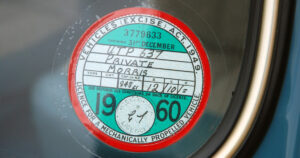The key to keeping your car running? Making sure that it’s well lubricated! Find out how you can change the oil of your car in just 7 steps here.
What you’ll need:
- Spanners
- Metal ramps (optional)
- Clean rags/paper towels
- New oil
- New oil filter
- A Bucket
1. Get the right oil
Never put oil in your car before? Stop right there. Before you pick up the first one you see in the shop, ask yourself have you got the right one. Your engine oil is the key to supplying your car with what it needs to stay alive. If you don’t know which oil you need then you can always go to your vehicle’s manual. You can even go to your local auto shop and ask one of the members of staff to help you with purchasing the right one.
2. Warm the car up
Before you exercise, it’s good to warm-up, and it’s the same for our cars before an oil change. Imagine all the leftover gunk that builds up in your engine when it’s cold. If you’re anything like us you’ll want to get rid of this stuff. So start your engine and run it for about 5 minutes or so. In doing this, your oil will be able to flow more freely and you should be able to drain more oil. It also makes it a little fast so that you’re not waiting around as long.

3. Watch it drain
Once you’ve got the car and the oil nice and warm, you’re ready to unplug, when you’ve turned your car off of course. Where’s the plug? If you’ve never had to find your plug before, it’s at the bottom of your engine, you can’t miss it. You should see something called the sump at the bottom of your engine. This is where all of your oil travels when your engine is cold. you’ll see a sump plug that you’ll need to unscrew. Be very careful with this as the oil might be warm to the touch and as soon as the plug has been pulled, the oil will start to pour out. Oh and have a container ready to catch all of the oil that comes out.
Jamar top tip: pull the dipstick out a little and unscrew the oil filler cap so that the oil flow more freely!
4. Reset to the last position
Once you’re happy that you’ve drained as much oil as possible from your engine, you’re ready for the next step. All you need to do is screw your sump plug back into the sump. Most sump plugs will need a copper crush washer to help you make a seal, some cars need these to be replaced with each oil change while others have one connected to the sump plug. Make sure you know which you have before starting.
After screwing your sump plug back in, find your oil filter. Unscrew the filter and replace it with your new one.
Jamjar top tip: wipe a little clean oil onto your filer’s o-ring. This will help it to survive the initial tightening force.
5. Top up your oil
Okay! So now for, what can be the hardest bit. Everyone tries to pour their oil without spilling any and it can be tough to do so. Try to make or buy a cone to use when pouring your oil as it makes it so much easier. We’d also recommended doing choosing a still day without much wind.
Check the capacity of your engine in your manual before you do anything else. Some cars need more while others only need a little oil. Once you’ve got the right amount in your mind, start pouring into your engine. Check the amount you’ve added periodically so that you don’t under or overfill (most oil containers have markings down the side to check).
After you’re happy with the amount of oil you’ve added, screw the filler cap back on, pull your dipstick and clean it off with a paper towel or clean rag. Push it down and pull it out again to check your level, if you’re happy that you have enough oil you’re good to go. Start your engine and run it for a few minutes and then turn it off, leave it for 5-10 minutes and check the oil levels again. Top up if needed and repeat.
6. Take it for a spin
Now that you’re all filled up, this is the best part. Fire it up and take it for a run. Once you’ve been for a ride, it’s probably a good time to check your levels again. If it’s full after a quick run around, jobs a gooden!
We love to recommend preventative maintenance too, so every week or two make sure that you’re checking our oil levels. This will help to notice any leaks or problems with your engine before they become critical or damage anything. If you’re doing this right before you sell a car you can always enter your reg below and see how much our buyers would pay… it’s free so why not?
[vrm]





















































